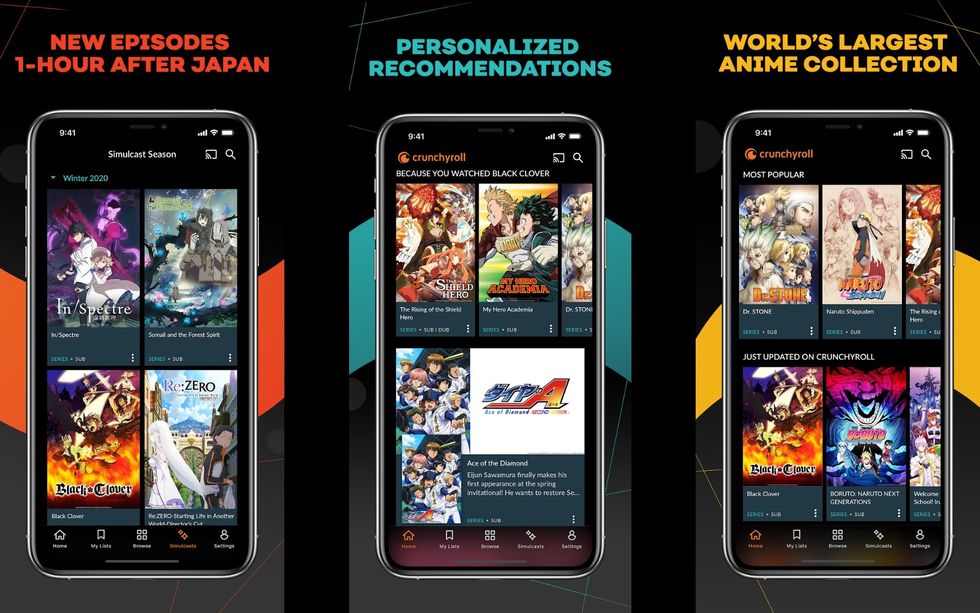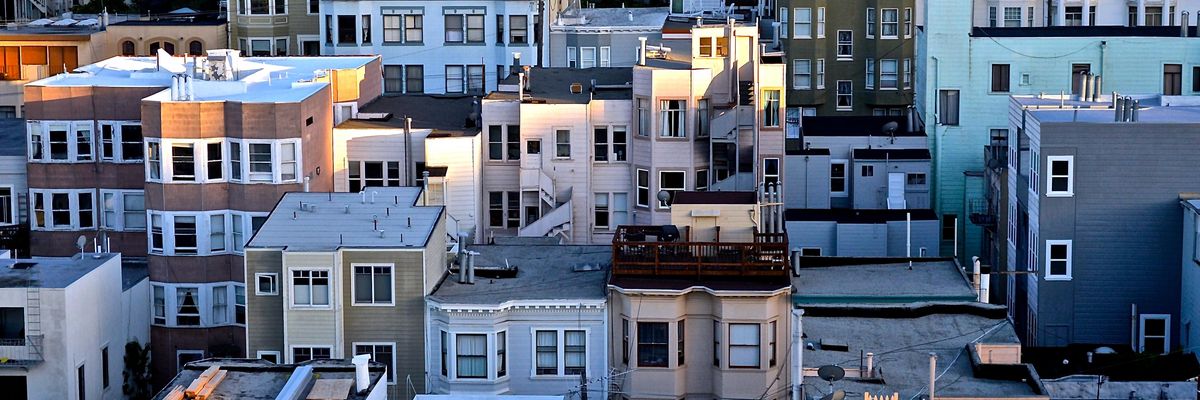

Get in the KNOW
on LA Startups & Tech
X
Photo by Kimson Doan on Unsplash
Can More Accessory Dwelling Units Fix LA's Housing Shortage?
Amrita Khalid
Amrita Khalid is a tech journalist based in Los Angeles, and has written for Quartz, The Daily Dot, Engadget, Inc. Magazine and number of other publications. She got her start in Washington, D.C., covering Congress for CQ-Roll Call. You can send tips or pitches to amrita@dot.la or reach out to her on Twitter at @askhalid.
Can more accessory dwelling units help a city with a chronic housing shortage?
A wave of new ADU startups that are based in L.A. or serving the region are betting on it. ADU companies like Otto (formerly known as Homestead), which focus on converting pre-existing structures (such as a garage) into housing, serve as a one-stop shop that will help homeowners with financing, design, permitting and labor. Other companies like Azure Printed Homes, Cover, United Dwelling and Villa Homes offer factory-built ADUs that are constructed off-site — also known as “prefab” ADUs. Others still, such as Cottage (based in San Francisco) partner with local contractors and help homeowners design, build and attain permits for their own custom ADUs.
ADUs (also known as granny flats, in-law apartments or backyard homes) describe a category of small, in most cases self-contained homes that can be built beside the original property. A prospect that’s currently trending in Los Angeles, where a chronic housing shortage and sky-high rents coupled with a 2017 state law forcing cities to relax their ADU regulations.
But as novice ADU builders soon discovered, constructing a small house isn’t a small task.
“I wouldn’t say [..building an ADU] is exactly easy, almost anywhere,” said Celeste Goyer, the policy director of Casita Coalition, an L.A.-based organization focused on expanding the use of ADUs for affordable housing throughout the state. “You can’t just go home and pick up a hammer, and have your cousin help you build your ADU. And so expectation management for everyone involved is important.”
The process of getting approved for an ADU normally takes months.
“Generally, many people struggle with the length and complexity of the permitting process and feel like their jurisdictions impose unnecessary red tape in the permitting process,” said Alex Czarnecki, founder and CEO of the custom ADU firm Cottage.
But a number of additional laws may make ADU construction easier in California. Last year Governor Gavin Newsom signed SB 9 into law, which allows California homeowners to build a second house on a single-family zoned lot. Another law known as AB 221 requires local authorities to act on ADU permit applications within 60 days otherwise it’s automatically approved.
“It’s common for certain municipalities to take longer than that to respond to an application or provide incomplete sets of comments,” said Czarnecki. “This drags out timelines for permitting and ultimately impacts the pace at which we can add housing.”
Despite the new laws, few homeowners, Czarnecki said, should attempt to build an ADU by themselves.
“The fact remains that the average homeowner is not a land developer and is not trained or prepared to oversee and manage the design and construction of a new unit on their lot,” added Czarnecki.
To that end, the heads of some ADU companies still believe more has to be done to improve financing the expensive building projects — as well as making them more affordable to low-income and moderate-income individuals. A typical prefab ADU ranges anywhere from $140,000 to $300,000. Custom ADUs are even more expensive. Converting a garage is cheaper, but in L.A., the process can easily approach six figures. None of which factors in the extra costs of permits, which ADU firm Modal estimates costs anywhere between $4,000 to $8,000 in Los Angeles.
There are few mainstream financing options for ADUs available, and renovation loans or cash-out refinancing often don’t cover the entire cost of the project. In a 2021 survey of homeowners by UC Berkeley, nearly 62% said they relied on cash savings or money from a friend or relative to pay for their ADU.
ADU advocates often tout it as an “affordable housing” solution — assuming that property owners will rent them out as an extra source of income. But with the median price of a single-family dwelling in L.A. County almost nearing $1 million, building an ADU is likely an opportunity reserved for more high-income individuals.
“Financing is really the only thing I think of that the city of L.A. and everywhere else really needs to work on. I think L.A. has been doing great with ADU use, and hopefully it will get better,” said Ross Maguire, CEO of Azure Printed Homes.
Samuel Schnieder, the CEO of Otto, said that ADU financing is a major barrier to expansion. Adding that, “It’s often a Catch-22 that the people who are the best equipped or the most enthusiastic about getting an ADU are the ones who can’t necessarily afford it.”
The California Housing Finance Agency this year began offering up to $40,000 in grants for such individuals, but it only covers new ADU “pre-construction” costs, which include everything from impact fees to permits to site prep. In Los Angeles, homeowners with an income below $180,000 qualify for such grants.
A total of 840 people in California have received grants since September — with all but a fraction receiving the full amount, a CHFA spokesperson confirmed to dot.LA.
First launched in 2019, Azure Printed Homes, based out of Culver City, relies on robotic printers to speed up the construction process. The company said it can 3D-print the walls of a 120-square foot unit in less than a day.
Maguire told dot.LA that Azure — which opened up reservations earlier this year — has received pre-orders for 167 units from 119 customers, totaling over $19 million in pre-orders.
But it’s unlikely you’ll see most of these units advertised as new rentals on Craigslist. Maguire says that most of Azure’s customer base desire an ADU to have more space for themselves or to house relatives, rather than to rent out as an additional source of income.
As such, some homeowners opt for factory-built ADUs instead of a more customized option, opting to shorten the timeline for inspections.
“Because our units are pre-approved with the State of California, there’s not a building and safety check that needs to happen on a local level with the city or county of L.A.,” Maguire told dot.LA..
However, even pre-fab ADUs have to be inspected on-site by the local planning authority. “(...the L.A.) Planning Department needs to look at how those modules interact with a specific site themselves, a process that can't be pre-approved as they are site specific,” confirmed a spokesperson for Azure.
In an effort to make the ADU permitting process faster, last year, the city of Los Angeles launched a set of “Standard Plans” that were pre-approved by LADBS. But such plans aren’t cheap — and won’t exempt homeowners from inspections.
“It should be noted that regardless of what pre-approved plan you choose, pre-approved plans still must go through the normal site-specific checks in order for the project to receive a permit,” said Czarnecki.
And if homeowners have the misfortune of building a Standard Plan ADU on an oddly-shaped lot or somewhere with atypical characteristics, they may have to go back to square one. In other words, their ADU will no longer be considered “pre-approved” and will have to go through the longer permitting process.
“Although the Standard Plans are a good jumping off point for creating a product that anyone can use -- at the end of the day, they’re mostly more expensive plans from what I’ve seen,” said Otto’s Schneider.
Casita Coalition and groups like California YIMBY are calling for better financing options for ADUs, particularly those that benefit individual cash-poor homeowners. At present, new ADUs are predominantly built in wealthier, whiter areas. In order for ADUs to actually help bridge the racial-wealth gap, policy experts say they have to actually be a viable option for the less affluent.
“I would be very pleased if more financing options [..for ADUs] developed from credit unions and community financial institutions to provide ADU-tailored loans to help lower income and moderate income home owners build ADUs,” Goyer told dot.LA.
Until then, the dream of Angelenos generating income from their backyards may remain just that.
From Your Site Articles
- LA's ADU Culture Still Faces Financial Barriers - dot.LA ›
- United Dwelling Raises $10M to Address the Housing Shortage ... ›
- These Granny Flat Designs Are Pre-Approved in LA - dot.LA ›
- Meet the Culver City Startup Looking to 3D-Print ADUs in Under 24 ... ›
- Can New Tech and ADUs Solve LA’s Housing Crisis? - dot.LA ›
- What Will Take To Make Modular Homes Mainstream? - dot.LA ›
Related Articles Around the Web
Amrita Khalid
Amrita Khalid is a tech journalist based in Los Angeles, and has written for Quartz, The Daily Dot, Engadget, Inc. Magazine and number of other publications. She got her start in Washington, D.C., covering Congress for CQ-Roll Call. You can send tips or pitches to amrita@dot.la or reach out to her on Twitter at @askhalid.
https://twitter.com/askhalid
Ethan Pines Photographed Tech CEOs as Heroes. They Look Radically Different as NFTs
01:51 PM | April 01, 2022
Ethan Pines
You might not recognize photographer Ethan Pines, but there’s a good chance you’ve seen one of his portraits.
The Los Angeles-based artist captured Theranos founder Elizabeth Holmes long before her fraud conviction, Uber co-founder Travis Kalanick before his expulsion and Ethereum co-creator Vitalik Buterin before the world beyond crypto learned his name. Years later, Pines is transforming his tech portraits into enigmatic non-fungible tokens.
Listed on MakersPlace—the NFT marketplace that hosted digital artist Beeple’s record-setting $69.3 million collage—Pines’ first collection dropped three months ago, starring Holmes and her “Nanotainer” blood capsules. The photographer’s next drop is titled “Abort, Retry, Fail?,” after the cryptic DOS error message. It debuted on Thursday and features a radiating, “Speed Racer”-inspired portrait of Kalanick, as well as a Monty Python-esque animation of Alphabet CEO Sundar Pichai popping out from behind fluffy, 3D clouds.
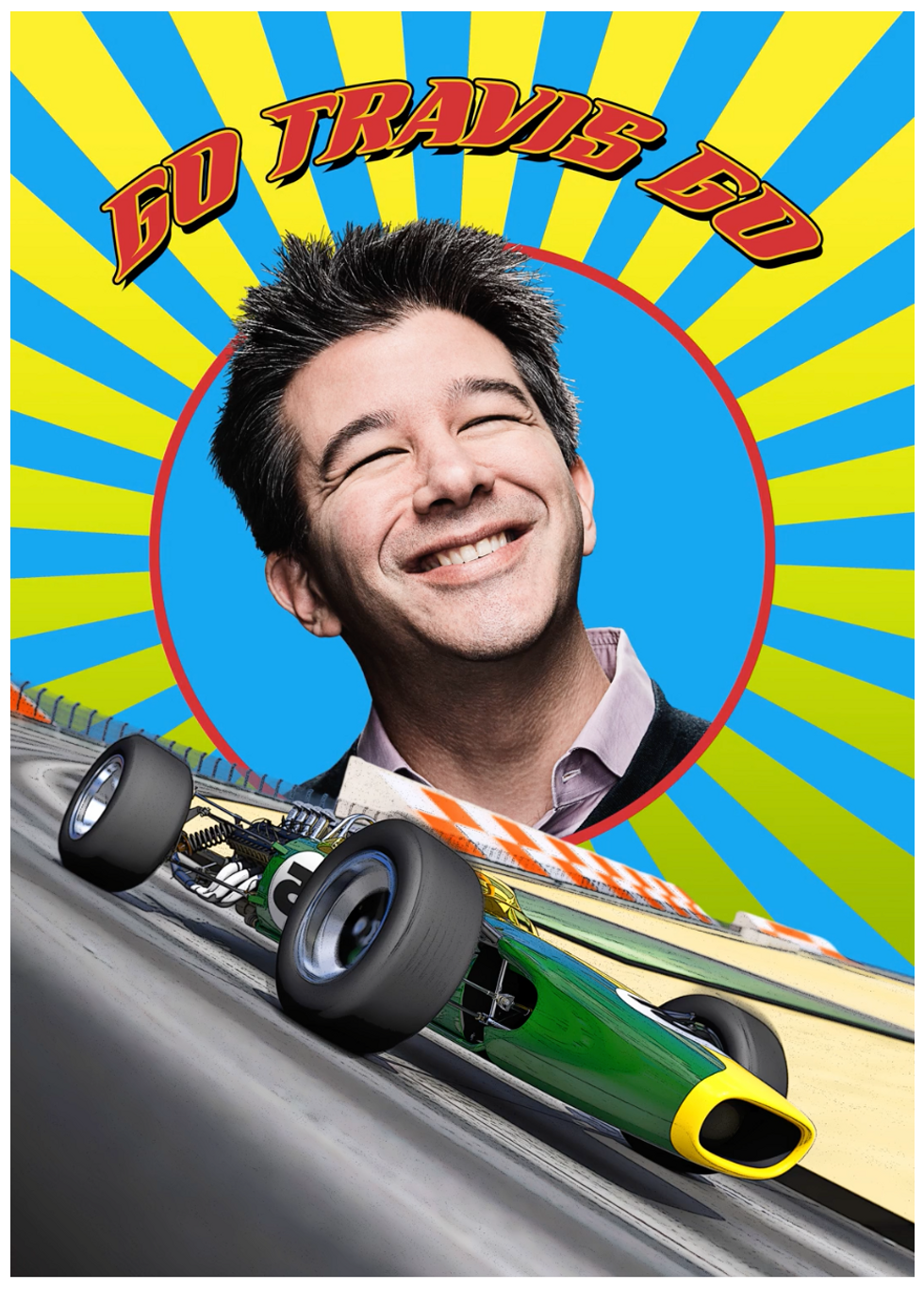 A still of Pines' animated NFT featuring former Uber CEO Travis KalanickEthan Pines
A still of Pines' animated NFT featuring former Uber CEO Travis KalanickEthan PinesThe allusions to cloud computing and Kalanick’s penchant for slamming his foot on the gas are straightforward for those in the loop on tech, yet the playfully off-kilter aesthetic of the collection—together with pop culture’s evolving outlook on tech figures—makes Pines’ work quite fun to experience.
“There’s a lot of power that tech has, and it can do a lot of good and can be problematic, too,” Pines told dot.LA this week at the NFT LA conference party that previewed his work. The event was co-hosted by MakersPlace and the Superchief NFT gallery in Downtown L.A.
Years ago, when Pines photographed Kalanick for the cover of Forbes, he shot him as a hero. At the time, Pines was there to “make [Kalanick] look good, and he’s there to have a good rapport with me, too,” he said. But Pines’ NFT artwork tosses that goal out of the window.
“If we start moving into the metaverse, I’m concerned that these same companies or other major conglomerates are just going to dominate it in the same way,” added Pines. “If Anheuser-Busch just starts buying up real estate in the metaverse, it’s gonna be taken over by advertising. I’m not an idealist when it comes to tech.”
Other NFTs in the collection include a shot of Buterin with his hands together, almost in prayer, while pixelated clouds, a balloon, a duck and a UFO float across the background. Many of the NFTs also feature sound design, produced by Pines on his iPad.
Though skeptical about tech, Pines went on to praise the NFT scene’s ability to “bypass the gatekeepers.”
"You don’t have to wait for galleries to throw you some crumbs,” he said. “It has this democratizing effect and it gets a lot more voices out there that you wouldn’t see otherwise. Is it all art? Who’s to say?”
Read moreShow less
Harri Weber
Harri is dot.LA's senior finance reporter. She previously worked for Gizmodo, Fast Company, VentureBeat and Flipboard. Find her on Twitter and send tips on L.A. startups and venture capital to harrison@dot.la.
Can a Niche Streaming Service Survive the Streaming Wars?
06:38 AM | July 28, 2020
Do niche services have a role to play in the streaming wars, or are they a musket in a battle of machine guns?
Heavyweight streaming services like Netflix, Peacock and Amazon are fighting for supremacy with broad, everything-for-everyone models.
Niche streaming services, by contrast, focus on a specific type of content for a specific audience. They pride themselves on being able to curate viewers' experiences with shows and movies they might not otherwise find. They often highlight their service's authenticity, efficiency and focus as competitive advantages. But as the behemoths spend big and increasingly expand their content libraries, is curation and community enough to survive?

BritBox chief executive Soumya Sriraman
"My board very laudingly says 'you guys have figured out how to get high-quality subscribers'," said Soumya Sriraman, chief executive of BritBox, a niche subscription service for British programming that launched in 2017 and recently surpassed 1 million subscribers. Sriraman told dot.LA that BritBox's focus has helped it to provide viewers a sense of community, which builds loyalty. She cites a high conversion rate of free-trial users to paying subscribers, and low cancellations.
"That's the goal – to bring in the right person and keep them," she said. "I don't want someone with a fleeting interest."
Sriraman suggested that offering that community feel is harder for the bigger, broad-serving platforms, and that being niche allows her team to better understand the interests of current and prospective customers.
"We can stay focused on learning more and more about them, and hence we'll be more efficient," she said.
L.A.-based Revry focuses on queer programming. The service is available for free or via an ad-free subscription tier. Viewers can also increasingly find it on third-party streaming services such as The Roku Channel. This range of distribution has helped Revry to reach over 250 million households and devices worldwide, according to chief executive Damian Pelliccione.
Pelliccione noted that his executive team includes two women of color and a Latino male, which he said underscores Revry's authenticity. He added that on his desk in Glendale sits a framed letter from a Saudi Arabian gay man who wrote to thank Revry for showing him that there are "other people out there like him."
"Consumers can sniff you out," Pelliccione said. "So when we're talking about Revry's impact and mission, it affects revenue."
That mission and community focus, he said, is itself a competitive advantage.
"Netflix has way more market share," he said, "but we call it the Netflix paradox: they're focused on a horizontal, not a vertical. We have the ability to take risks, to push boundaries, and to effectuate that diversity, inclusivity and authenticity."
Dekkoo, a subscription service founded in 2015 focused exclusively on content for gay men, sees its strength in controlling costs and appealing to a specific viewer.
"We're not really looking to have 100 million subscribers; our goal is to provide a service to a neglected audience," Dekkoo president and co-founder Brian Sokel told dot.LA. "Our size and scale means we have so little overhead that we're able to operate in this special universe and provide an add-on experience for the person who's a real connoisseur of gay cinema."
Sokel added that sticking to a subscription model rather than advertising helps his service remain true to its viewers. "(On advertising-based platforms), the content doesn't become the focus, the advertising does. We can just focus on the content," he said.
"There's not a chance that we'll go out of business," Sokel added, noting that Dekkoo has no debt and average monthly subscriber growth of 5-10% (which has increased of late because of COVID, he said). "We're going to be here."
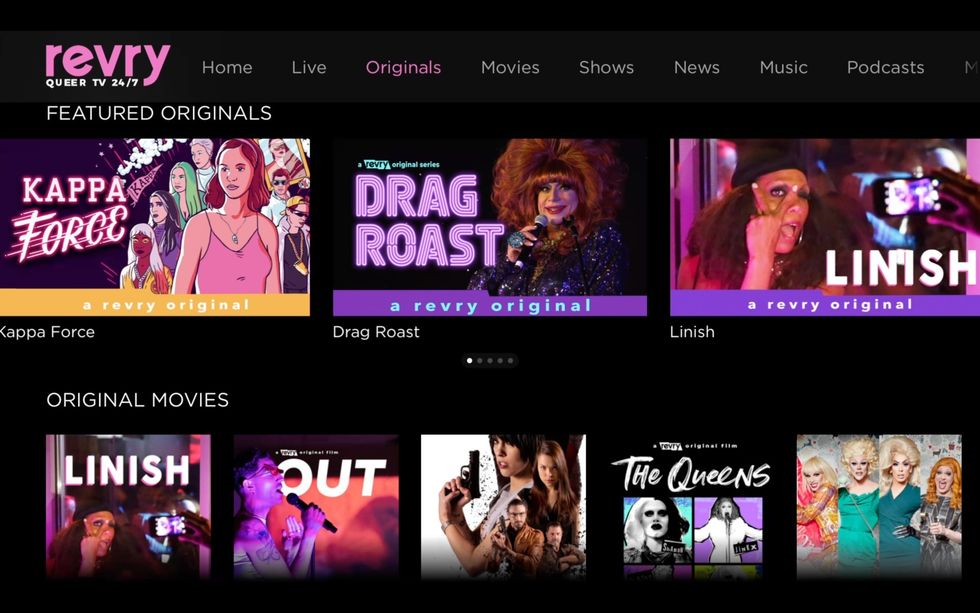
A Question of Costs
Not everyone buys the logic that focus, authenticity and efficiency will enable niche services to survive.
Most niche services have a limited customer base. This puts a ceiling on their potential revenues and ability to pay for content.
Media analyst Matthew Ball recently wrote that "It's increasingly clear that (niche is) not going to work."
"The cost of content doesn't change based on whether the buyer is large or small, profitable or unprofitable, niche or broad," Ball told dot.LA. He argues that serving customer demand for a given niche is ultimately "a question of who can spend more on titles."
This math favors the more cash-rich, larger services, which Ball said already "are going after...niches and will service them well." In his thread, he points out that anime is appearing in non-niche libraries more often. For instance, Crunchyroll, a niche service for anime, is sharing more of its content with the recently launched HBO Max (Crunchyroll and HBO Max share the same parent company, WarnerMedia.)
DC Universe, a streaming service devoted to the DC comics franchise (and also owned by WarnerMedia), has increasingly been shuttling its content to HBO Max. The service declined a request for interview.
But Alden Budill, Crunchyroll's head of global partnerships and content strategy, told dot.LA that only a small percentage of Crunchyroll's content is available on HBO Max. She likened those titles to "gateway anime" likely to appeal to a broad audience, with the goal to attract new customers to the niche service.
"We see it as an opportunity to create visibility," she said.
That's a perspective shared by other niche services. Sriraman pointed out that BritBox benefits from having breakouts like "The Crown" on Netflix and "Downton Abbey" on Amazon, which serve as a kind of on-ramp for new consumers of British TV.
Ball, however, reached a different conclusion: "As Netflix pioneered + few once believed: (the) model is everything for everyone, always."
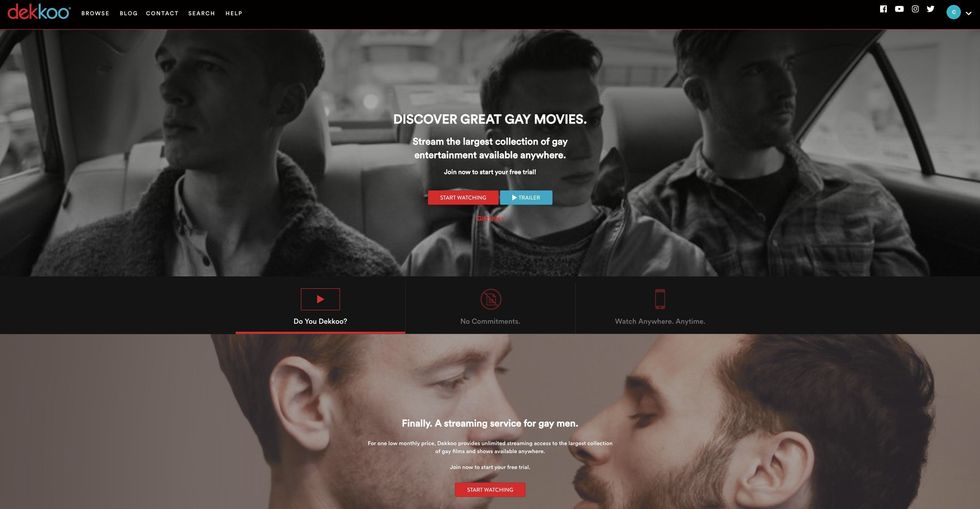
Niche vs the Everything Model
Brett Danaher, an economics professor at Chapman University who specializes in entertainment analytics, sees a case for both sides.
Generally, he says, the economics favor the everything-for-everyone model. The reason: bundling.
In an industry like entertainment, Danaher said – in which you might pay $5 to watch "The Irishman" but $10 to watch "Selling Sunset," and your friend would do the opposite – bundling those pieces of content together is the optimal business model. The more products in the bundle, and the more diverse those products are, the better, he added.
But there's an exception: "streaming fatigue."
Because Netflix, Hulu, Apple TV+ and other streaming titans are battling for content – each claiming some, but not all, of what viewers are looking for – a fan of a given niche may grow exasperated by the difficulty of actually finding it.
"A niche service could be the solution," Danaher said – provided three things are true.
First, he said, there must be enough demand for the content. If it's too niche, it'll be hard to generate enough revenue to cover the costs of acquiring and/or producing titles – which Sriraman said tend to grow over time.
Second, to serve as an antidote to streaming fatigue, consumers have to feel the service provides the "majority of the content within that particular niche," Danaher said. This doesn't mean the niche service must be the exclusive provider of that content, though.
Lastly, Danaher said that for a niche service to succeed, content creators must see value in having their material on the platform. Otherwise, they could decide to sign an exclusive deal with another, larger service, leaving the niche service with an insufficient catalog.
The Creator's Leverage
To that point, Budill of Crunchyroll said that anime-makers recognize how her service has attracted a legion of loyal fans, recently surpassing 3 million subscribers.
"If you are a creator seeking to reach a critical mass of authentic anime fans, we believe that we've demonstrated that we can be trusted," she said.
Sokel, too, said Dekkoo is "very valuable to a filmmaker: They can make a video and say, 'How does anyone find my film on Amazon? How much money do I have to spend to get people to find it?' Whereas they know that with Dekkoo, if they've created a film that would be of interest to gay men, there's no better platform for a specific audience that wants to see your film."
The big platforms' data-rich algorithms are meant to help viewers find content suited to their tastes, but Danaher notes they have shortcomings.
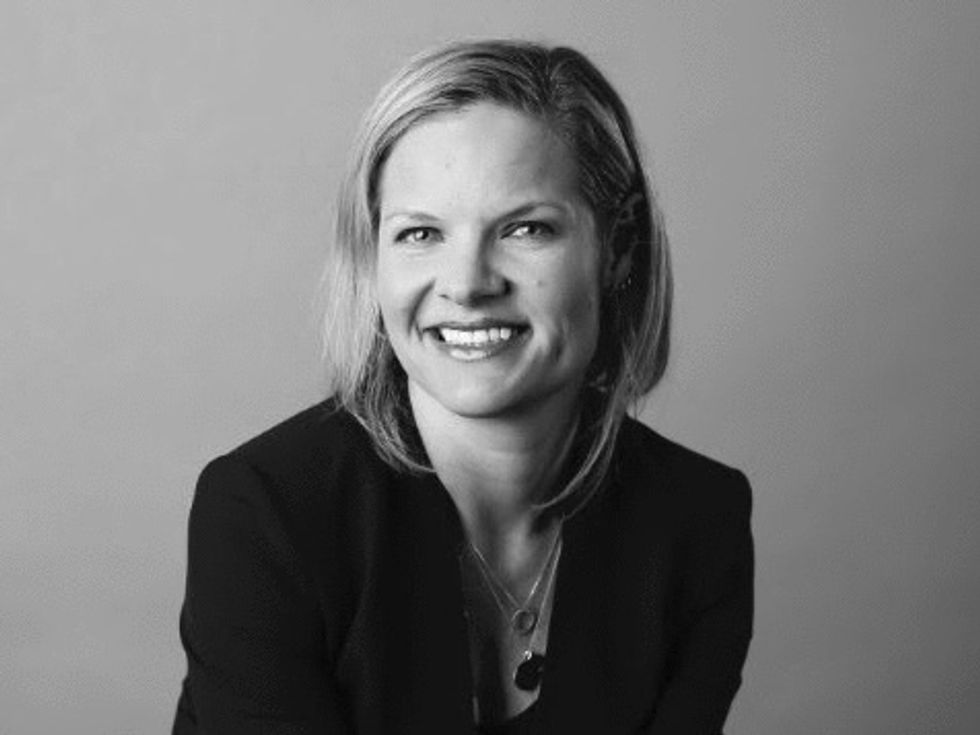
"Each service only wants to write an algorithm to recommend to you content that is on their service, rather than actually the best piece of content. So the ability of algorithms to help you find the content within a niche is limited by how much content that service actually has within that niche," he said. Conversely, he continued, so long as a niche service meets those three conditions, "they are both able and incentivized to develop an algorithm to point you to the best piece of content within that niche for your preferences. And, you know it's right there for you to watch. This is the best argument I can come up with for niche services to survive."
Having support from a bigger corporation makes a difference, too. Sriraman points to BritBox's mutually beneficial relationship with its owners, BBC Studio and ITV, two of the biggest producers of British programming. Likewise, Crunchyroll's backing from WarnerMedia could strengthen its chances.
Another possibility for a niche streaming service is being acquired by a heavyweight hunting for content.
Pelliccione said Revry has already turned down two acquisition offers, information he says he's never shared with a publication.
Sokel said, "I think there's logic behind coming in and buying a company like ours. A major player could look at Dekkoo and say they serve this market, why not just acquire them? (Especially since we're) cash positive and no debt. But we don't chase that."
Given the many factors that will determine the fates of niche services as the streaming wars rage on, there appears to be just one obvious answer for now: we'll have to keep watching.
---
Sam Blake primarily covers entertainment and media for dot.LA. Find him on Twitter @hisamblake and email him at samblake@dot.LA
From Your Site Articles
- Fiction Riot Raises $250,000 to Build Mobile Content Service - dot.LA ›
- Spotify Earnings: The Music Streaming War Is Heating Up ›
- Peacock, NBCUniversal's Streaming Service, Takes Flight - dot.LA ›
- Shantell Yasmine Abeydeera on How Revry Creates Community - dot.LA ›
- Revry's Model for Keeping Audience and Artists - dot.LA ›
- Warner Bros.’ Films Will Be Released in Theaters, HBO Max - dot.LA ›
- Streaming Trends to Watch in 2021 - dot.LA ›
- Tastemaking & Gatekeeping in the Streaming Era - dot.LA ›
- What the Future of Streaming Means for Artists - dot.LA ›
- Analysts Say Gaming and Shopping Won't Save Netflix - dot.LA ›
- Analysts Say Gaming and Shopping Won't Save Netflix - dot.LA ›
- Peacock Sees Mobile Users Surge During Olympics - dot.LA ›
- Peacock Sees Mobile Users Surge During Olympics - dot.LA ›
- VideoAmp Raises $275 Million to Dethrone Nielsen - dot.LA ›
- Former Disney CEO Backs Struum, a Streaming Sample App - dot.LA ›
- Nacelle’s CEO Says Hollywood Sees Creators as Entrepreneurs - dot.LA ›
- The Queue App Wants to Help People Binge on Streaming - dot.LA ›
- Streaming Services and New Tech Storm Upfront - dot.LA ›
- Warner Bros. Discovery Ditches Nielsen for VideoAmp - dot.LA ›
Related Articles Around the Web
- The best alternative streaming services, from anime to arthouse ›
- Crunchyroll - The Official Source of Anime and Drama ›
- REVRY - Free Queer TV ›
- BritBox - Home ›
- Browse - Dekkoo - Watch Gay Movies and Gay Series Online ›
- Niche Streaming Services to Bump Up Your Binge-Watching Game ... ›
- 15 Niche Streaming Services You Need To Know ›
Read moreShow less
Sam Blake
Sam primarily covers entertainment and media for dot.LA. Previously he was Marjorie Deane Fellow at The Economist, where he wrote for the business and finance sections of the print edition. He has also worked at the XPRIZE Foundation, U.S. Government Accountability Office, KCRW, and MLB Advanced Media (now Disney Streaming Services). He holds an MBA from UCLA Anderson, an MPP from UCLA Luskin and a BA in History from University of Michigan. Email him at samblake@dot.LA and find him on Twitter @hisamblake
https://twitter.com/hisamblake
samblake@dot.la
RELATEDTRENDING
LA TECH JOBS



